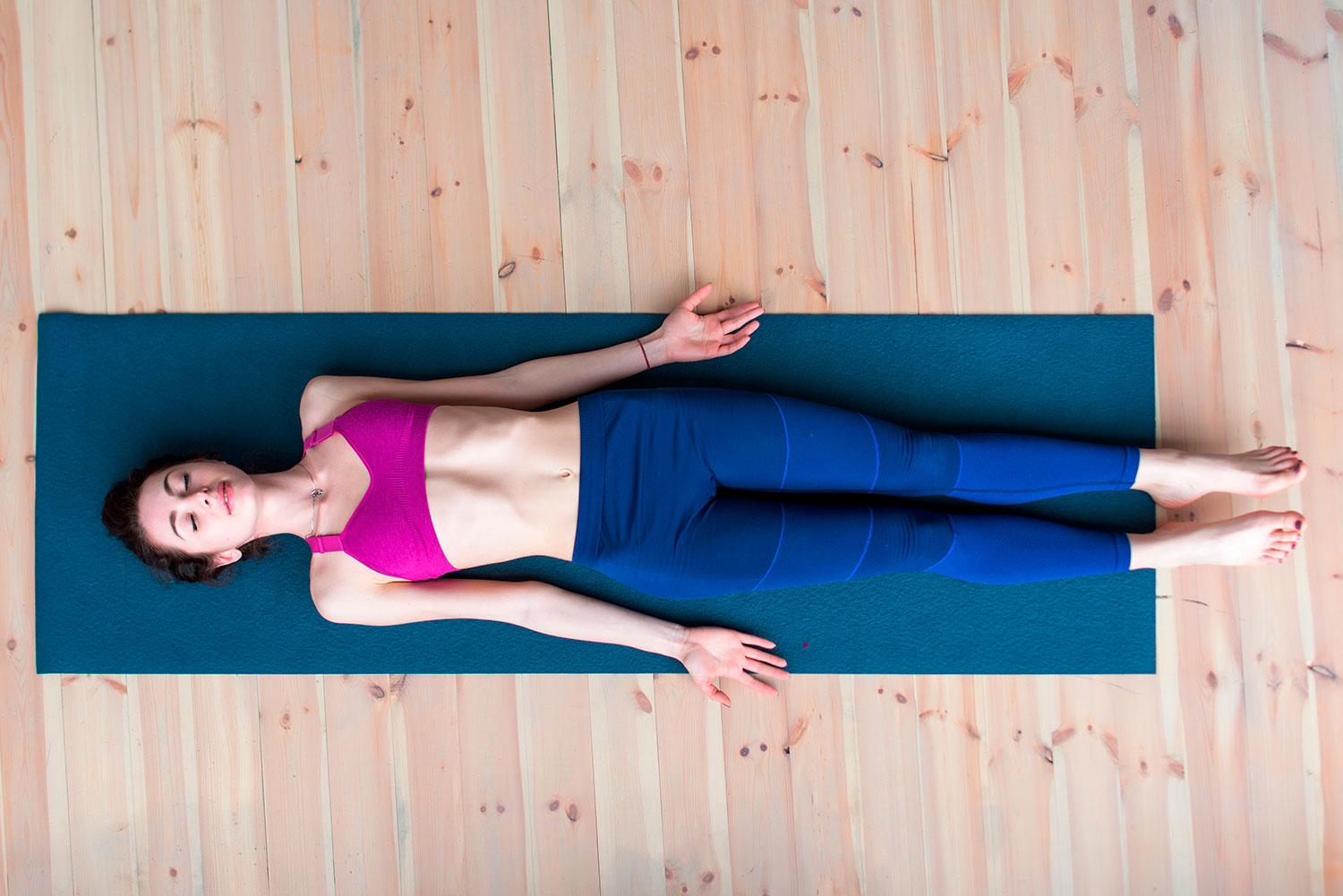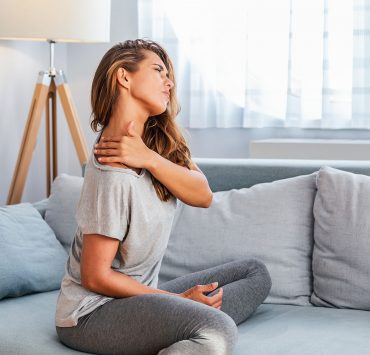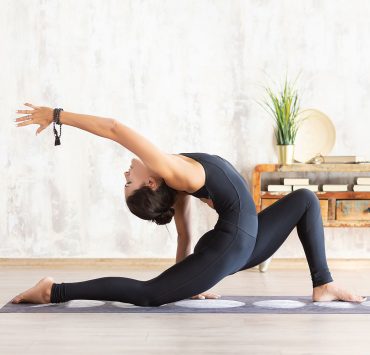
After spending nearly two decades as a relationship therapist, Patricia…
When that cup of chamomile tea and lavender-scented pillow mist just aren’t cutting it, yoga steps in as sweet salvation. The calming and restorative effects of meditation, breathwork, and many physical postures are enough to coax the body and mind into dreamland. If insomnia is part of your regular existence, try incorporating a short practice as part of your nightly routine.
Giving yourself time to rest and reflect before adding the pressure of getting a good nights sleep may be precisely what you need. Whether it’s a hectic work schedule, relationship issues, family drama, or just the ramblings of your relentless mind; yoga helps us observe these thoughts while remaining unattached. This awareness shines peace and stillness on the waves of thought that often interfere with falling asleep smoothly.
In addition to the mental perks of a nightly yoga practice, it serves to release any stored tension in the body rather than carry it through the night. Restless legs, neck aches, tightness in the spine, and indigestion can all get in the way of a successful slumber. Yoga alleviates these symptoms and prevents them from ever disrupting us in the middle of a really juicy dream again. If it’s helpful, relocate your practice to the comfort of your bed and let savasana carry you right off to sleep.
Set yourself up for success and minimize distractions by dimming the lights and putting your phone away. Try following the 10-minute routine below and behold your bright-eyed and bushy-tailed self.
Ananda Balasana — Happy Baby Pose

Happy baby pose will help you fall asleep fast and remain settled, well, like a baby! This posture doesn’t require much effort while bringing space and relief to the lower back and hips. Any tension in these areas can quickly result in sleepless nights and an abundance of tossing and turning. Lie on your back and bend both knees into the chest, grabbing ahold of the outside edges of the feet or ankles. Use the upper body to gently draw the knees down on the outer sides of the body while keeping the feet directed towards the ceiling. From this shape, you can rest in the stillness or add some rocking movement if that helps loosen stiffness in the hips. Another option is to take it one leg at a time, lengthening the opposite leg straight out or bending at the knee with the foot grounded. Yoga straps can be an excellent tool for more in-depth discovery of this pose but remain mindful of what feels the most calming for you. Hold this shape for about a minute, letting each exhale sweep through and release the tangled layers of the hips.
Viparita Karani — Legs Up The Wall Pose

Resting with legs up the wall gets to the heart of the matter, literally! Blood rushes from the lower body to relieve the heart and produce a soothing effect on the entire body. You’ll also notice any aches or pains related to the hamstrings or lower back are gently pacified in this restorative shape. Let the eyes shut down and the body to succumb to gravity as any stress melts away and the senses pull inward. To enter this posture, either bring one hip to the wall and windmill the legs up or sit as close as you can to the wall then slowly walk the feet up and scoot the sit bones in. The further your sit bones are from the wall, the milder the stretch will be in the hamstrings. Arms can rest by the sides, or you can add in a soft shoulder opener by bringing them overhead. Stay here, actively receiving the benefits of this shape and feeling wholly supported for approximately 2 minutes. When you’re ready to exit the pose, roll to one side with knees bent and pause in a fetal position for several breaths before making your way upright.
Salamba Balanasana — Supported Child’s Pose

When you think ‘resting pose,’ it’s likely that this is one of the first to enter your mind. Child’s pose is our safety net for cooling and restoration when things get too heated during class. It’s also a wonderful place to relieve tension and calm the mind, bringing awareness back to your current experience. Come to a kneeling position with big toes touching and knees closer for more support or wider for a more significant stretch. Take a deep breath in to feel length through the spine, and exhale the upper body over the thighs. Connect your third eye center down as you breathe into the wholeness of your being. Arms can go heavy by the sides or extended overhead, whatever feels most natural. Welcome space between the vertebrae by drawing the crown away from the shoulders and the ribs away from the tailbone. You can always bring pillows or a bolster under the torso to accentuate the therapeutic benefits. Another lovely option is to bring a rolled blanket under the thighs for extra support in the hips and a gentle release in the calves. Take full breaths in, filling the back body up with space and potential, and follow those breaths out to sink deeper into the hips while letting the heart soften down. Continue to focus on the sound, quality, and texture of your breathing in this shape for 2 minutes before moving forward.
Prasarita Padottanasana — Wide-Legged Forward Bend Pose

Introducing activity to the body is a great way to prepare the muscles for rest. Think of it as one last hoorah for the body before entering a state of complete surrender. Forward folds require a dynamic element in the lower body to yield in the upper body, making them both busy and restful at the same time. Find a seated position with legs wide enough to feel a stretch in the inner thighs, but not so far that the toes turn inward. Flex the feet and energize the legs by drawing the kneecaps towards the thighs. Take a deep breath in and find length from the tailbone up through the crown. As you exhale, keep the thighs externally rotating as you slowly hinge forward at the hips. Keep the spine straight by pressing the belly button and chest forward as you guide the upper body into relaxation. Use your arms for support, or perhaps take a bolster under the upper body. Stay here for 1 minute, breathing into the sensations as they arise and allowing yourself to soften around the exhales while remaining engaged.
Supta Baddha Konasana — Reclining Bound Angle Pose

Many postures guide us to find a long, straight backbone, but this shape emphasizes the natural curves of the spine without compromising the integrity of our alignment. Reclined bound angle pose embraces warmth and space in the hips while bringing repose to the entire body. Laying on your back, bring the soles of the feet together and let the knees go heavy to the sides. Bring pillows or blankets under the thighs and head for extra comfort and support, especially if the hips are feeling particularly tight. Observe the movement of breath in and out by placing one hand on the belly and one on the heart. Let the eyes sink back into the head, and the muscles of the face, neck, and jaw relax. Stay here for at least 2 minutes just using the stillness to check in and facilitate an inner dialogue.
Supta Matsyendrasana — Supine Twist Pose

Nothing better than literally wringing out all the toxins from a day before heading to bed. Twisting feels incredible and removes any saved tension through the spine while aiding in digestion. Cleansing the body in this way frees emotional baggage and preps the body for a restful slumber. Enter your twist with care to avoid quickly going beyond the body’s comfort zone. Lay flat on your back and draw both knees towards the chest. On an exhale, drop both knees over to one side at hip height and bring the arms straight out from the shoulders. Turn your gaze to the opposite direction of the legs, but only if it feels appropriate for the neck. Try bringing a blanket or pillow between the legs to comfort the knee joints as you yield to gravity. Release any grand expectations here as you breathe fully into the abdomen and track the exhale up through the crown. Stay here for 1 minute, and as you switch sides, be mindful that they may require different adjustments.
Apanasana — Knees to Chest Pose

Acknowledge this last pose as a final energetic squeeze before expanding out into tranquility and submission. Carrying the knees to the chest produces several physical benefits that include making space in hips and delivering a gentle massage to the lower back. This shape is mentally very grounding and brings us back to earth, ready to enter a restful state. Lie on your back and hug both knees towards the chest, holding around the shins or under the thighs. Lightly pull down to increase the stretch through the back body. Notice if the body is craving stillness or movements, perhaps adding in some gentle rocking front and back or side to side. Stay here for 1 minute giving one last big embrace on the final inhale, and exhale to release out into a comfortable sleeping position.
What's Your Reaction?
After spending nearly two decades as a relationship therapist, Patricia journeyed down the path of writing as a vehicle for sharing her wisdom. Her work reflects a sincere interest in readers’ wellbeing and is abundant with helpful advice and fascinating insight.














